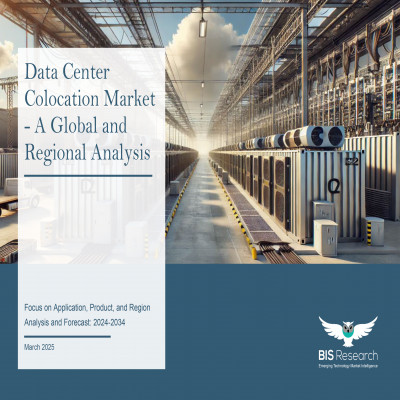Introduction to Europe Data Center Colocation Market
The Europe data center colocation market was valued at $56.72 billion in 2024 and is projected to grow at a CAGR of 13.68% from 2025 to 2034, reaching $226.76 billion by 2034. The market for data center colocation is expanding quickly in Europe due to the growing need for safe, scalable, and affordable IT infrastructure. Colocation services are now crucial for offloading infrastructure management while maintaining high-performance, resilient, and energy-efficient operations as businesses embrace cloud computing, hybrid IT architectures, and digital transformation projects.
The need for dispersed, low-latency data center networks is being further fuelled by the region's growth in edge computing. At the same time, sustainability has emerged as a top concern, leading colocation providers to make investments in improved cooling systems, ecologically conscious facility design, and the incorporation of renewable energy. These factors, combined with stringent European data protection regulations and growing enterprise demand for uptime and operational efficiency, are positioning colocation as a critical component of Europe’s evolving digital infrastructure landscape.
Market Introduction
The market for data center colocation in Europe is expanding rapidly due to factors including cloud adoption, growing digitisation, and strict data protection laws like GDPR. Colocation has become a strategic alternative that offers safe, high-performance facilities without the capital costs associated with constructing and maintaining in-house data centers, as businesses move away from on-premise infrastructure in favour of more scalable and economical options.
The need for colocation services is growing as a result of hybrid IT models and multi-cloud initiatives, especially in data-intensive sectors like e-commerce, healthcare, and finance. Distributed colocation sites are also being developed throughout the region as a result of the increasing use of edge computing to support low-latency applications like AI and the Internet of Things.
Sustainability is also a significant market driver. In order to achieve corporate ESG goals and adhere to changing environmental norms, European colocation providers are making significant investments in carbon-neutral infrastructure, innovative cooling systems, and green energy. While emerging markets in Southern and Eastern Europe are gaining pace due to cost benefits and increased demand for digital products, Western European markets—particularly Frankfurt, Amsterdam, Paris, and London—remain important hubs. All things considered, the European colocation market is expected to grow steadily due to technological advancements, adherence to regulations, and growing business dependence on digital infrastructure.
Market Segmentation:
Segmentation 1: by Application
• IT and Telecom
• Banking, Financial Services, and Insurance (BFSI)
• Government and Public Sector
• Healthcare
• Manufacturing
• Retail
• Others
Segmentation 2: by Business Model
• Retail
• Wholesale
Segmentation 3: by Region
• Europe: Germany, France, U.K., Netherlands, Ireland, Italy, and Rest-of-Europe
Europe Data Center Colocation Market Trends, Drivers and Challenges
Trends
• Growth of edge data centers to support low-latency applications
• Increased demand for hybrid and multi-cloud environments
• Rising adoption of liquid cooling and energy-efficient infrastructure
• Greater focus on green colocation powered by renewable energy
• Expansion of hyperscale colocation partnerships with global cloud providers
Drivers
• Accelerating digital transformation and cloud migration across industries
• Stringent data sovereignty and GDPR compliance requirements
• Cost-efficiency and scalability benefits over on-premise infrastructure
• Growing demand for high-performance computing (HPC) and AI workloads
• Surge in e-commerce, video streaming, and remote work post-COVID
Challenges
• High capital and operational costs in establishing new data center facilities
• Power availability constraints and grid limitations in urban areas
• Variability in environmental regulations across European countries
• Increasing cybersecurity risks and pressure to ensure robust data protection
• Talent shortages in specialized IT and data center operations

